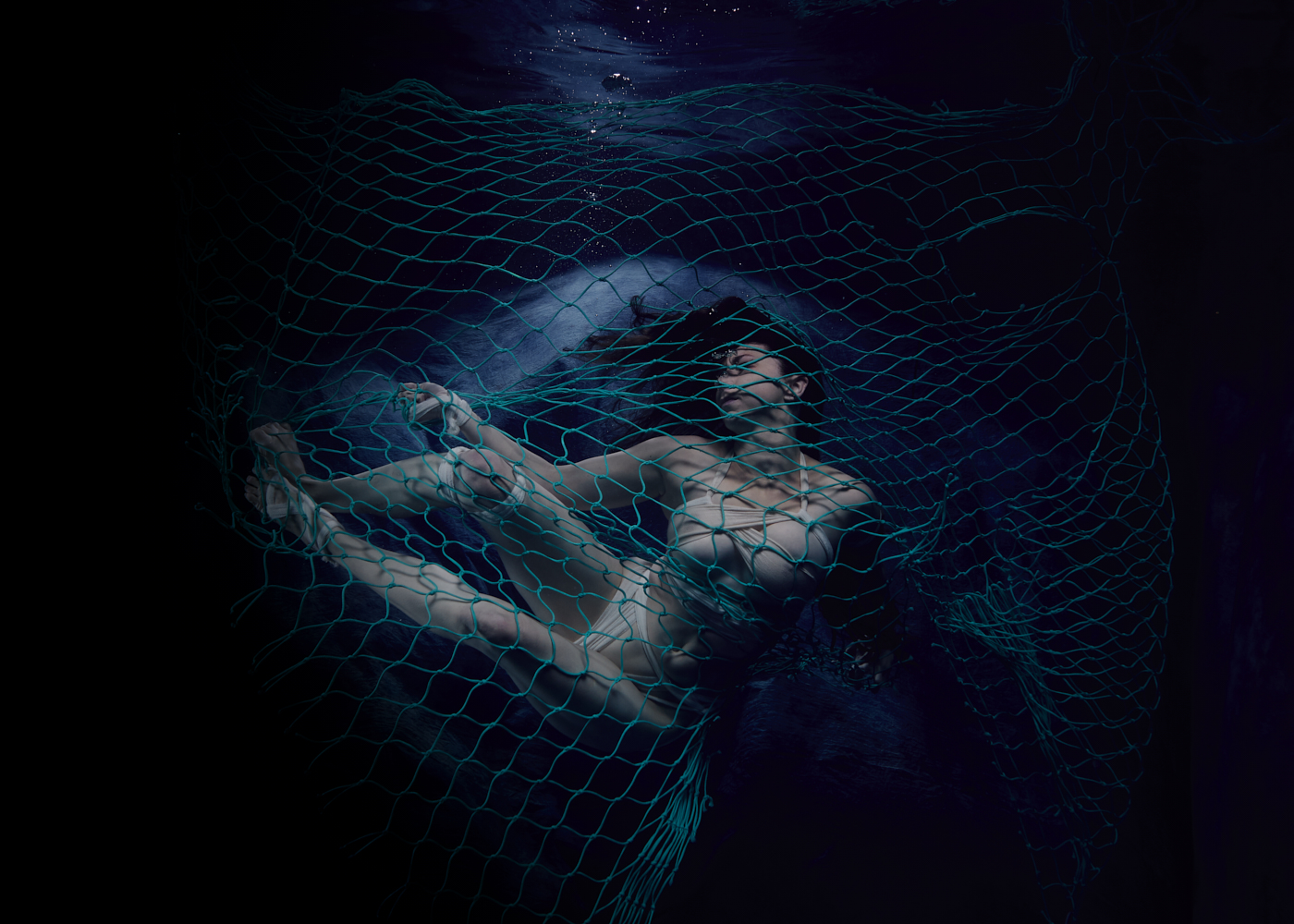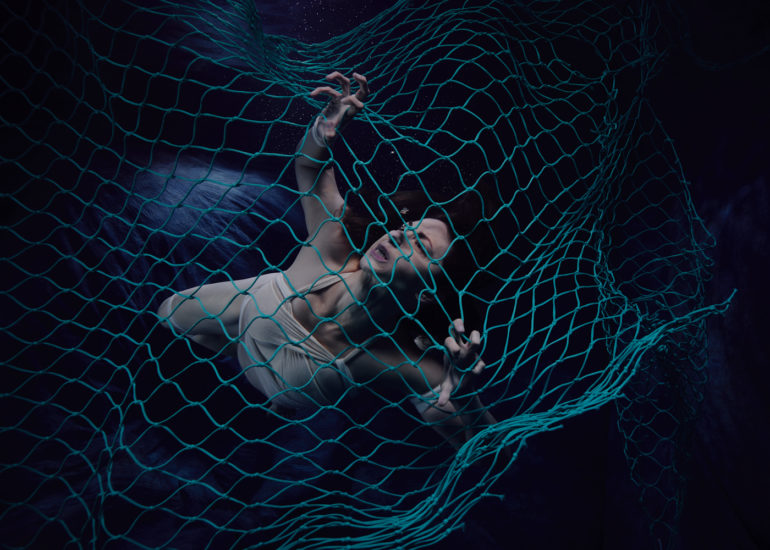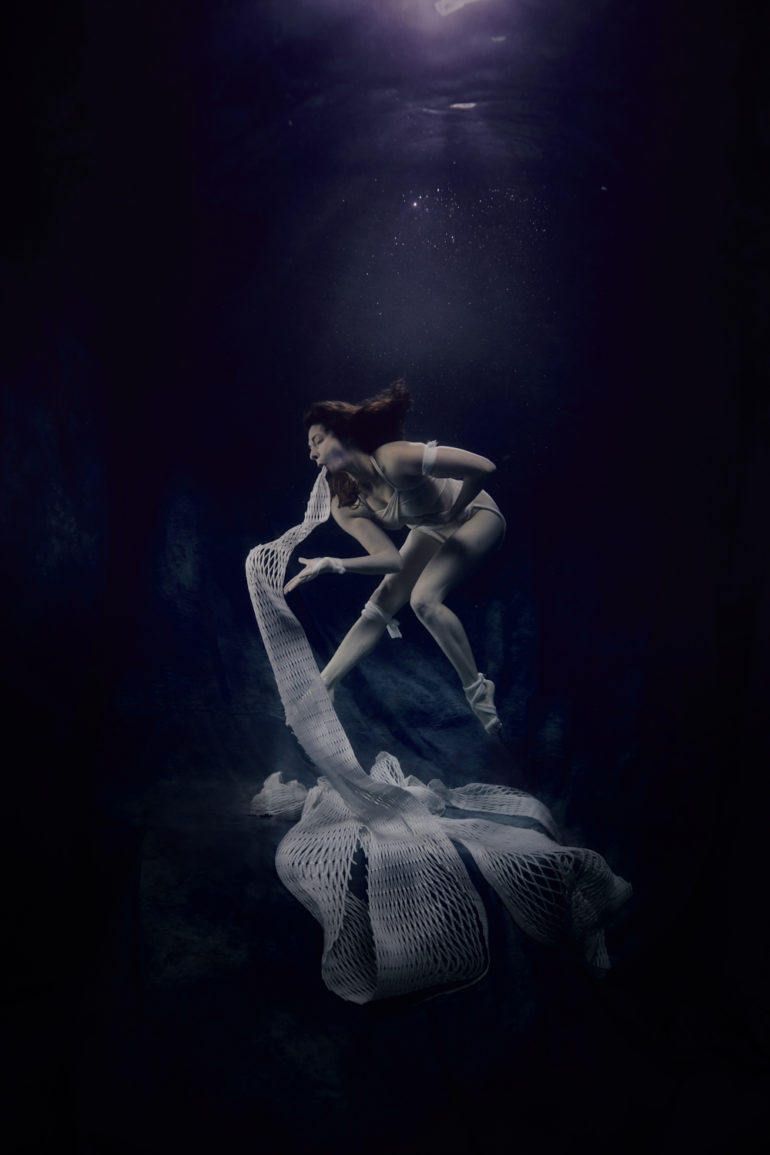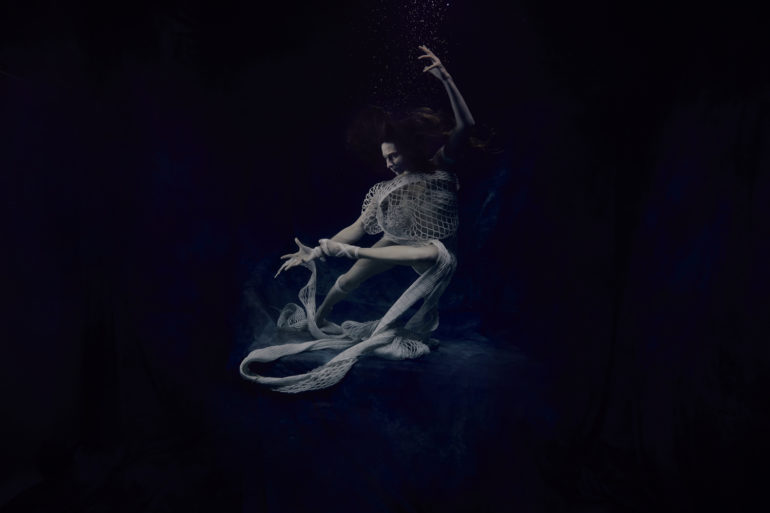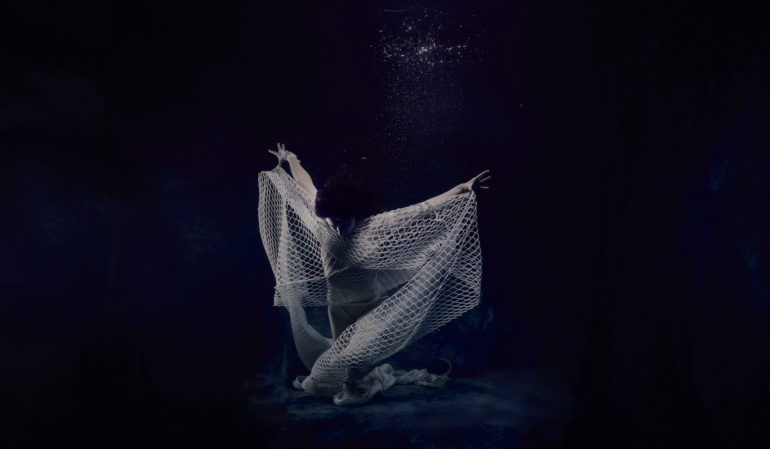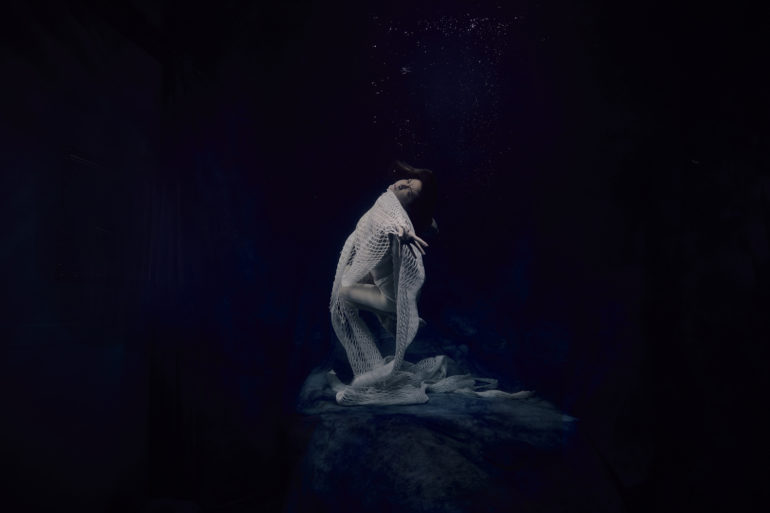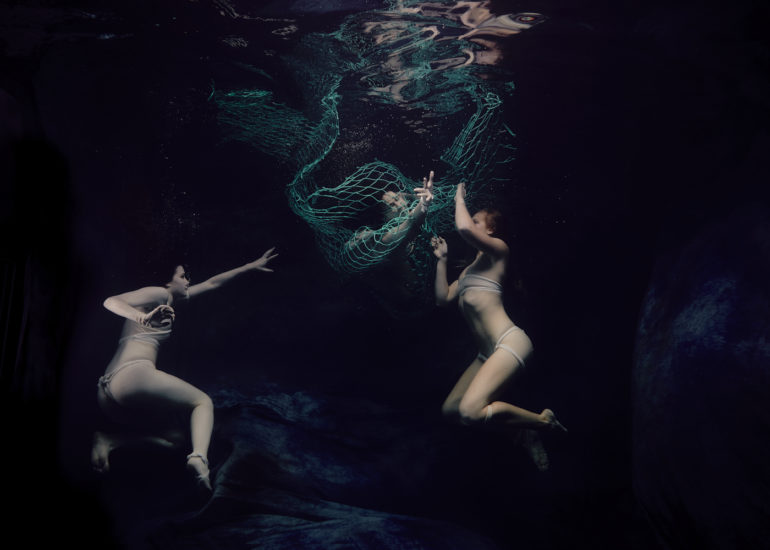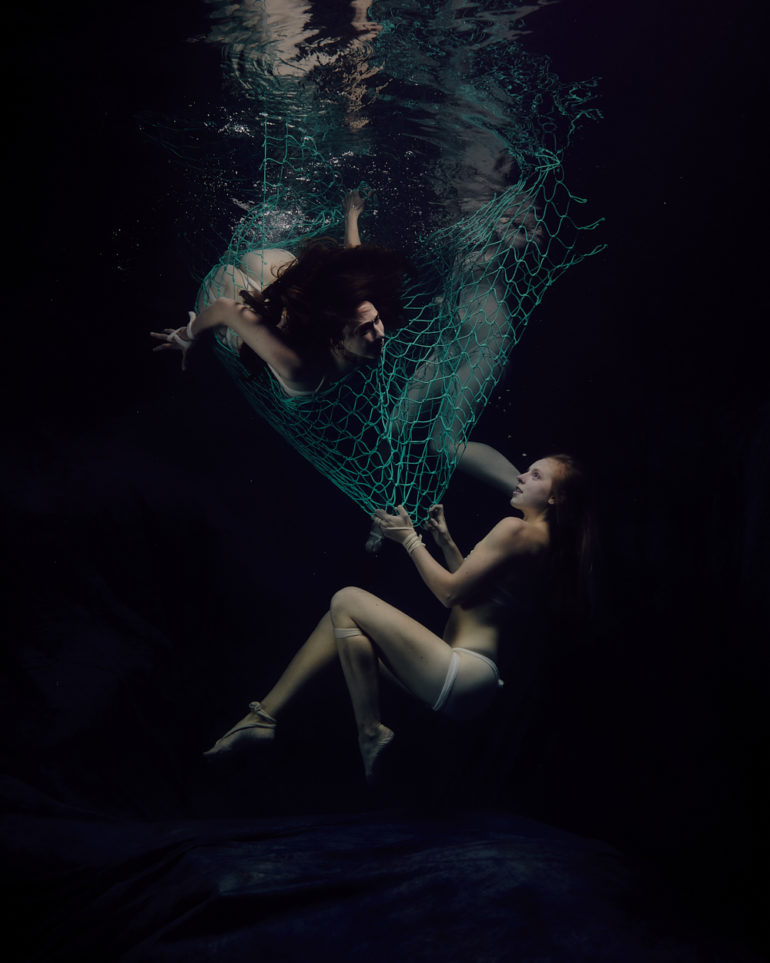Last Updated on 07/22/2017 by Chris Gampat
All images for Silent Killers by Jose G Cano and Christine Ren. Used with permission.
“To stop derelict gear being left in the first place, requires international policy change and regulations & monitoring of the fishing industry.” stated Christine Ren about her project Silent Killers. The photo series has been making the rounds on the web and is designed to bring attention to a big problem: pollution of the water.
So naturally, we wanted to get to know a bit more about the creative message behind the project.
She states:
But as consumers, we have the ability to ensure the incentive for economic solutions related to ghost nets. Because what works really well for this issue is net buy back programs. There are companies hard at work training and paying fisherman to reclaim lost gear, and regenerating nylon waste from ghost nets into new material to create products – everything from swim wear to skateboards. For this series, I’m asking people to commit to a 30 day challenge to spread the word about businesses that are turning reclaimed ghost nets into sustainable products. I’m highlighting the following solution partners and asking people to share and champion these ocean heroes:
Silent Killers from Christine Ren on Vimeo.
Phoblographer: Talk to us about how you got into photography.
Christine: I’m not actually a photographer and truly, have no formal photography background. But I have always loved the ability of a single image to capture a powerful story.
I was a professional dancer, who then pursued science and ultimately dove into filmmaking and media communications, as well as marketing. There are some similarities between film and photography, but almost as many, if not more, differences. Creating imagery campaigns has inspired me to delve into the early learning stages of composite photo editing, and more about lighting and technical photo setups.
Due to the constraints of working underwater, including my limited breathhold as a burgeoning underwater performing artist as well as all props and sets being in constant motion, it made much more sense in starting this series to craft the campaigns around images.
My primary experience has been in positioning media campaigns and crafting them, as well as directing and performing, so in creating these series, I really lean on the creative expertise and technical knowledge of the photographer’s I pair up with. After all, the best teams are certainly formed by bringing together many different individuals with various strengths that complement each other.
Phoblographer: What made you want to get into conceptual shooting?
Christine: I am an entrepreneur as much as I am a creative, so I am always on the lookout for gaps in the market. When you look at underwater photography in particular, 95% of it is nature photography of animals and reef systems. To me, this means there is not only huge room to do something very different, but that the former will also be necessary to bring mass attention to the ocean ecosystems that we are rapidly losing – and in this lifetime.
Conceptual shooting lends me the ability to craft emotionally-evocative images that stand out from the crowd; narratives that people can truly see themselves in, connect to and desire to share widely.
Phoblographer: Where did the idea come from for the fishing net photography project? Obviously, we know that it’s about getting a message across but what spurred the concept of you actually being caught in the net underwater?
Christine: The question of where ideas come from is certainly one artists of every era have been asked. I can’t tell you where exactly my concepts come from, but I can convey a bit about how I invite the concepts in. First, my work embodies the idea that ocean conservation is a human issue. So I use my body and movement as a canvas for these issues, and draw on my background in dance for body positioning and conveying emotion. I use this idea as a base framework and from there typically find starting points by looking at ocean conservation issues, whether global or localized to a specific area – searching for messaging gaps, what needs attention and hasn’t been conveyed in an engaging way. From there, I know no other way to describe it then as a chaotic leap of faith off a cliff as I hurdle myself into various creative wormholes – viewing things from the lens of scientist, then dancer, then filmmaker and on and on. Fitting the final messages into the boxes I’ve created for them – something press-worthy, that will resonate with the public and be shared, yet stay true to the science, that will have a clear call-to-action and be informative plus informational – is a bit of a check off the box nightmare, but it’s a fulfilling challenge for sure.
Everyone’s creative process is different, but for me, it requires alot of solitude and quiet. I gather raw materials in terms of inspiration at every turn in the world – from a conversation with a scientist, watching a new environmental film, reading research and even just watching the ocean. Then the ideas seem to all synthesize somehow on their own accord – when I’m deep in meditation, or in a dream.
In terms of artistic execution, I have always held the idea of bringing together all of my gifts into one cohesive offering to the world. My backgrounds in dance, media and ocean conservation have always been a dream to pursue less separately. Through much testing, failing and testing again, I have finally started to create the initial stages of a powerful body of underwater images that convey ocean conservation themes. I think without hope, we are truly lost. So I do my best to listen and observe the world as it currently is, while holding a clear vision of and deep commitment to the world I wish for us to create. It’s not easy.
For Silent Killers specifically, it followed the protocol I’ve described above and came about through collaborative discussions with the photographer, Jose G. Cano. We started with ocean issues that we both were very passionate about, and then conceptualized within the time, location, and cost constraints we had in which to create.
Phoblographer: Talk to us about the gear that you used.
Christine: From a technical standpoint, you’d have to really speak to Jose G. Cano for the specifics of his setup. We shot in his newly renovated underwater photo studio in Nelson, New Zealand that gave us the ability for overhead lighting as well as lighting from the back and side through windows in the pool underground. We had assistants, and underwater safety divers present and worked with a various props and nets. Jose I believe uses a Canon 5D to shoot with underwater housing and is on scuba while shooting. For me, I performed on breathhold – though we had the option to set me up weighted underwater with divers swimming in to give me air. There is always a bar running across the pool on the top for me to hang onto in between takes, which is super essential. It also was where we tethered the nets with cable ties in various positions.
Phoblographer: What’s your plan for this project? What are you doing to try to get the message out about it?
Christine: Our aim with this campaign was to showcase ghost nets as the silent killers they are. Most of us have seen sad photos of sea turtles, manta rays, sharks, struggling in the confines of ghost nets. As such, the idea of this shoot was to use people to highlight the struggle, pain, and resignation that these nets cause in the ocean – whether tangling life or being ingested. To create emotionally-evocative, eerie yet awe-inspiring, underwater photos to bring mass attention to this issue, and its solutions.
After the execution, I spend weeks heavily pitching the packaged final piece with the images, message, and BTS story to numerous press contacts and viral news sites. I gather brands working on the issue to run gear giveaways, and find social influencers with large followings to help cross-promote. I also do a lot of interviews and some local speaking engagements in my community. It is a a full-time, unpaid, job, but Silent Killers has been my most widely shared, liked, engaged with and written about piece to-date. I’m really excited and pleased with the success of the messaging.


